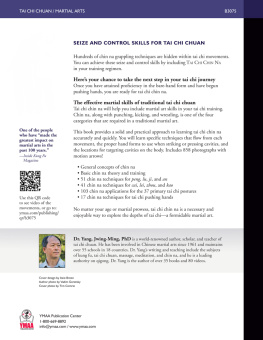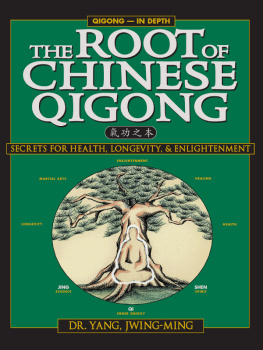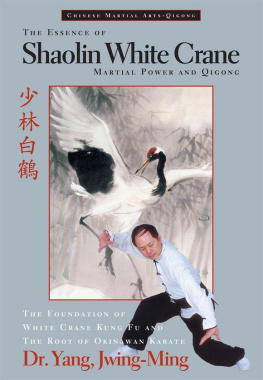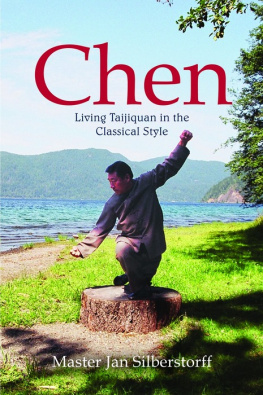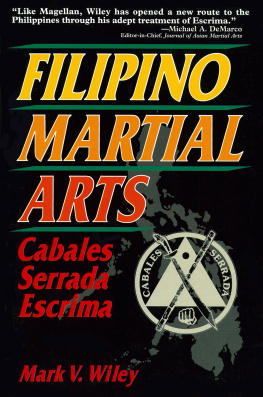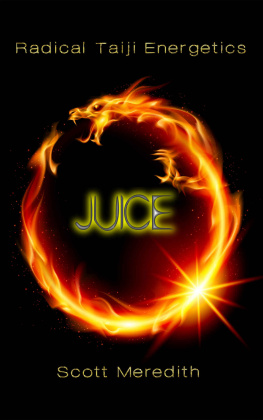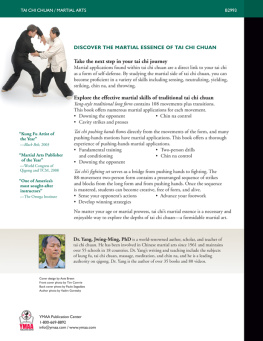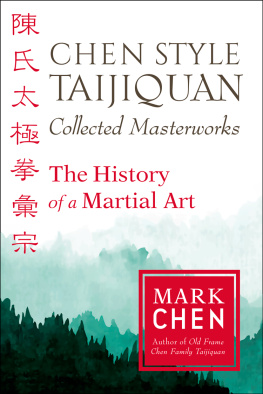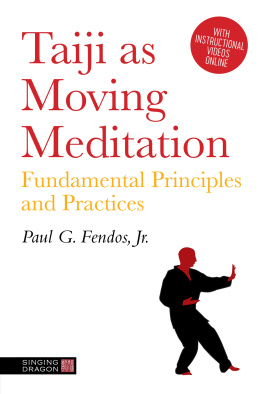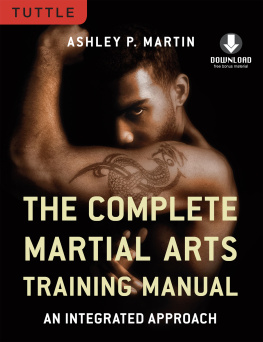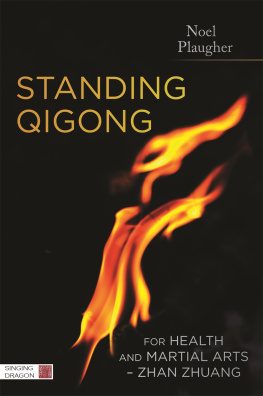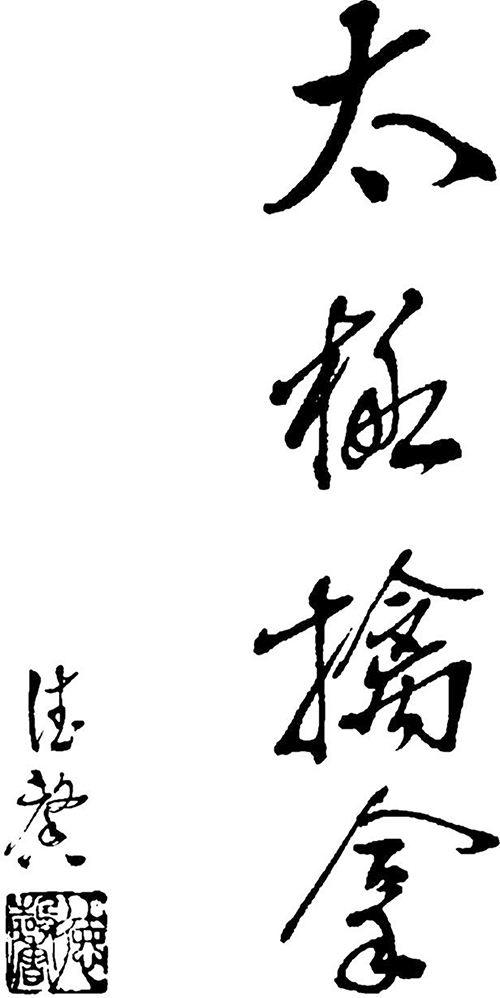TABLE OF CONTENTS
DR.YANG, JWING-MING
Tai Chi Chin Na
THE SEIZING ART OF TAI CHI CHUAN
YMAA Publication Center, Inc.
Wolfeboro, NH USA
YMAA Publication Center, Inc.
PO Box 480
Wolfeboro, NH 03894
800 669-8892
ISBN: 9781594393075 (print edition) 9781594393082 (ebook edition)
All rights reserved including the right of reproduction in whole or in part in any form.
Second edition copyright 1995, 2014 by Dr. Yang, Jwing-Ming
Cover design and anatomy image enhancements by Axie Breen
Copyedit by Dolores Sparrow and T. G. LaFredo
Caption editing by Leslie Takao
Proofreading by Sara Scanlon
Index by Dolores Sparrow
Photos by YMAA unless noted otherwise, Ramel Rones was the photograph model.
This book has been typeset in Adobe Garamond and Trade Gothic and printed on #60 FSC Husky Offset.
Original anatomy images copyright 1994 by TechPool Studios Corp. USA, 1463 Warrensville Center Road, Cleveland, OH 44121.
Publishers Cataloging in Publication
Yang, Jwing-Ming, 1946
Tai chi chin na : the seizing art of tai chi chuan / Dr. Yang, Jwing-Ming. 2nd ed. Wolfeboro, NH USA : YMAA Publication Center, [2014]
pages ; cm.
ISBN: 978-1-59439-307-5 (print) ; 978-1-59439-308-2 (ebook)
Revised edition of: Taiji chin na (qin na). YMAA, c1995.
Includes bibliography and index.
Summary: Tai chi chin na will help you include martial art grappling skills in your tai chi training. This book provides a solid and practical approach to learning specific techniques that low from each movement, the proper hand forms to use when striking or pressing cavities, and the locations for targeting cavities on the body.Publisher.
1. Tai chi. 2. Martial artsTraining. 3. Hand-to-hand ighting, OrientalTraining. 4. Self-defense. 5. Kung fu. 6. Qi gong. 7. Martial artsPsychological aspects. I. Title. II. Taiji chin na (qin na).
| GV504 .Y37 2014 | 2014949077 |
| 613.7/148dc23 | 1410 |
The practice, treatments, and methods described in this book should not be used as an alternative to professional medical diagnosis or treatment. The author and the publisher of this book are NOT RESPONSIBLE in any manner whatsoever for any injury or negative effects that may occur through following the instructions and advice contained herein.
It is recommended that before beginning any treatment or exercise program, you consult your medical professional to determine whether you should undertake this course of practice.
Warning: While self-defense is legal, fighting is illegal. If you dont know the difference, youll go to jail because you arent defending yourself. You are fightingor worse. Readers are encouraged to be aware of all appropriate local and national laws relating to self-defense, reasonable force, and the use of weaponry, and to act in accordance with all applicable laws at all times. Understand that while legal denitions and interpretations are generally uniform, there are smallbut very importantdifferences from state to state and even city to city. To stay out of jail, you need to know these differences. Neither the author nor the publisher assumes any responsibility for the use or misuse of information contained in this book.
Nothing in this document constitutes a legal opinion, nor should any of its contents be treated as such. While the author believes everything herein is accurate, any questions regarding specific self-defense situations, legal liability, and/or interpretation of federal, state, or local laws should always be addressed by an attorney at law.
When it comes to martial arts, self-defense, and related topics, no text, no matter how well written, can substitute for professional hands-on instruction. These materials should be used for academic study only.
This ebook contains Chinese translations of many terms and may not display properly on all e-reader devices. You may need to adjust your Publisher Font Default setting.
Romanization of Chinese Words
The interior of this book primarily uses the Pinyin romanization system of Chinese to English. In some instances, a more popular word may be used as an aid for reader convenience, such as tai chi in place of the Pinyin spelling, taiji. Pinyin is standard in the Peoples Republic of China and in several world organizations, including the United Nations. Pinyin, which was introduced in China in the 1950s, replaces the older Wade-Giles and Yale systems.
Some common conversions are found in the following:
| Pinyin | Also Spelled as | Pronunciation |
| qi | chi | ch |
| qigong | chi kung | ch gng |
| qin na | chin na | chn n |
| jing | jin | jn |
| gongfu | kung fu | gng foo |
| taijiquan | tai chi chuan | t j chn |
For more information, please refer to The Peoples Republic of China: Administrative Atlas; The Reform of the Chinese Written Language; or a contemporary manual of style.
Formats and Treatment of Chinese Words
The first instances of foreign words in the text proper are set in italics whenever possible. For readability, the Pinyin term an is italicized throughout: an.
Transliterations are provided frequently: for example, Eight Pieces of Brocade (Ba Duan Jin, ).
Chinese persons names are mostly presented in their more popular English spelling. Capitalization is according to the Chicago Manual of Style 16th edition. The author or publisher may use a specific spelling or capitalization in respect to the living or deceased person. For example, Cheng, Man-ching can be written as Zheng Manqing.
Photographs
Many photographs include motion arrows to help show the starting position of the body motion.
The origin of taiji () is misty and turbid; we call it wuji () (no extremity). When it is extremely calm, it appears condensed and peaceful externally. However, concealed within it there exists both yin () and yang (). These two, yin and yang, mutually transport, vary, advance, and withdraw. Consequently, there is neither void nor defect. The name we give to this hidden movement of yin and yang is taiji.
Application of this theory to two-person taiji pushing hands practice reveals the same twin virtues of yin and yang. You and your partner mutually harmonize and coordinate with each other, and thereby improve both your own and each others health. Taiji is used not only for defensive purposes. It says in the Yi Jing, or Book of Changes (), that the [hidden] beginning of the misty origin [i.e., wuji] is called taiji. From the nourishment of the two poles [i.e., yin and yang], ten thousand objects were born.
The word taiji was first seen in the Yi Jing. Though the word taiji was also mentioned in the Han Book, it recognized that this word originated from the Yi Jing. In the Yi Jing, it says, Taiji is the key which dominates the generations and variations. [It] is the mother of the million objects between heaven and earth. [If we] trace the beginning of the world, it is certain that it originated from thisthe sole misty qi. It also says, Taiji, the master of the qi, is the order [i.e., rule] and the great foundation of the generations and variations is the origin of the sole qi. Therefore, it is called the grand ultimate. Fu Xi saw taiji as the dawn of the day. It is the mother of the beginning. The origin of the million [objects] and the source of the sole qi, therefore, is called grand ultimate, [which is] able to generate, originate, and transport without stop.

